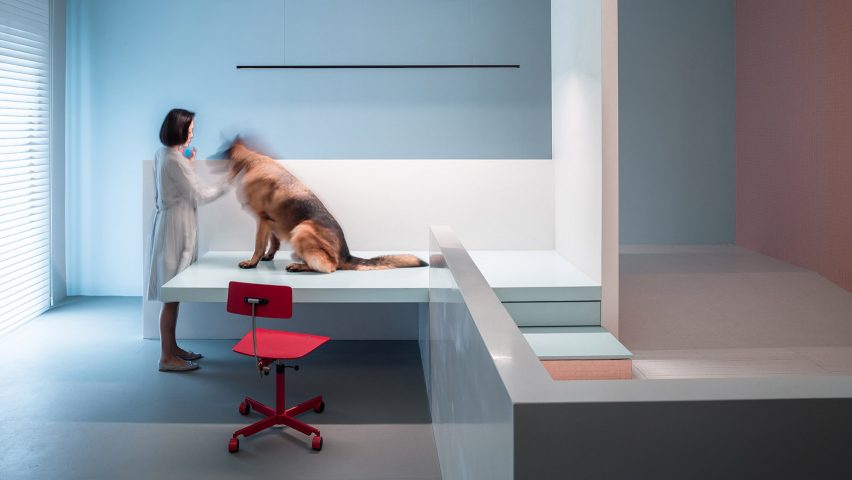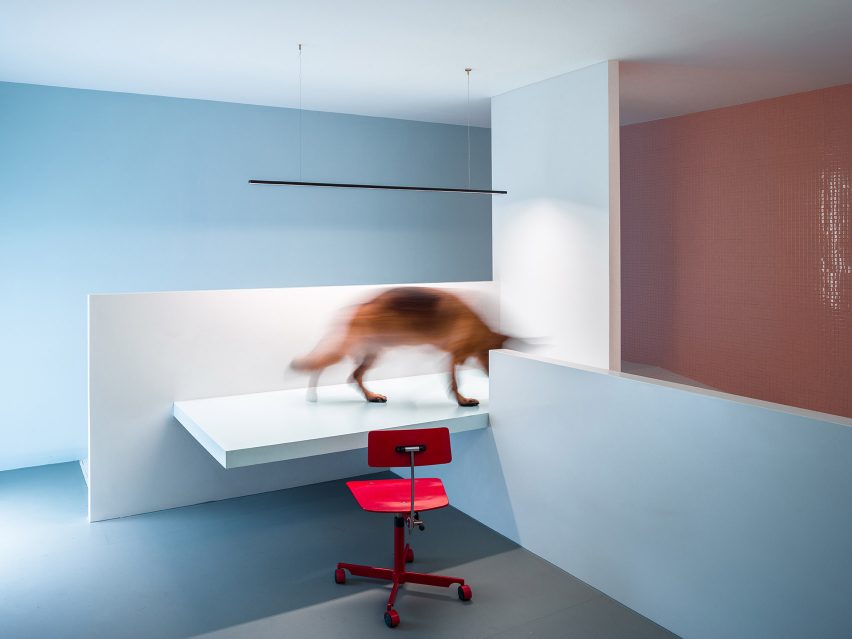Atelier About Architecture Design Entire Floor for Disabled Dog
Over the past few decades, dogs have made some enormous strides in terms of their status. They are now seen as equal with human beings in some sectors, dressed in clothing despite their natural fur coats, and even referred to as some people’s “children” despite their scientific classification. So when Atelier About Architecture was asked to plan a home in Beijing that focused on the comfort and care of a dog suffering from a congenital joint disease, the firm took up the challenge without hesitation. Not only did the pup end up getting a floor of its own, but the entire house was also designed with its comfort in mind.

Protected and Pampered
Congenital joint disease is one of the most painful maladies a canine can contract. Walking can be strenuous, especially when climbing slopes or stairs, and slips and falls that occur while bathing are particularly agonizing. The architects considered all these fine points when optimizing the home for the dog’s personal safety.
This lucky dog, who prefers to remain anonymous, now has the entire ground level of its owner’s (aka pet parents) home, affectionately dubbed “Dog House,” dedicated to its health and consolation. From the floor plan straight through the building materials, furnishings, and color palette, everything has been carefully chosen to protect and pamper.
Livin’ the Dream
Instead of conventional tile or carpet, the ground level has been fitted with a super soft, slightly buoyant material that’s easy on the pooch’s feet and joints. To protect against slips and falls, stairs and ramps have been covered with a non-slip, waterproof coating.

After carefully researching the habits of both the owner and dog, the architects proposed that the dog’s floor have two rooms dedicated solely to the canine’s toilet needs, with lots of open space and easy clean-up options in both.
A centrally located wet room has easy corridor access via ramps for pain-free bathing. The open-air shower in here has no barriers, so the dog can freely frolic while he’s bathing and engage in that wild freeform shaking that typically makes pups smile.
If the dog ever feels like taking a more low-key bath, he can always use the smaller bathroom, where he’ll find a spacious dog bathtub whimsically decorated with a pawprint design. Noise-reducing curtains surround the tub to soften the sound of barking if the dog ever feels over-stimulated by the bath.
Color Considerations
Despite the widespread rumor that dogs are color-blind, the architects’ research found that canines simply recognize less color than most humans do because their eyes have only two kinds of color receptors.

They explain: “According to authoritative researches from recent years, dogs can recognize yellow, blue, and transitional color segments in-between in the color spectrum. [We] tried to enclose the space by structuring colors in this project, together with the direct and indirect rendering of lights, to guide and effect and mood of spaces.”
Based on their findings, Atelier About Architecture created color groupings for different areas of the home depending on how they were going to be utilized. The home’s shared spaces, including the kitchen, dining, and living rooms, are all on the first floor, and all of them have been decorated in either a lively palette of sky blue, rose pink, and golden yellow or a more muted combination of navy, lake blue, and dark gray. Rooms used solely by the owner are painted in shades of gray and white.
The architects add: “Whenever we see the owner and their beloved dog living and playing together inside the house, we are always touched by the love between them. Their love is expressed beyond the presentation of architecture and design skills, which is probably the ultimate meaning of the entire project.”




